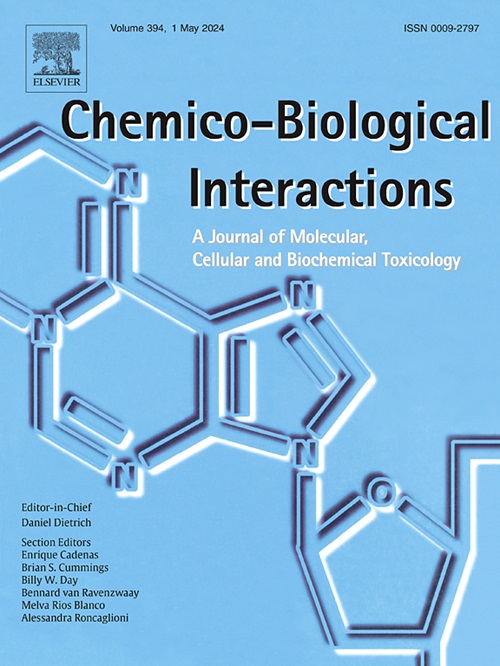线粒体靶向荧光探针用于硫化氢检测和成像。
IF 4.7
2区 医学
Q1 BIOCHEMISTRY & MOLECULAR BIOLOGY
引用次数: 0
摘要
硫化氢(H2S)是一种有效的氧化还原活性信号分子,通常在疾病状态下失调。H2S的产生及其参与与线粒体功能障碍相关的各种病理状况已被广泛记录。在应激状态下,存在于细胞质中的半胱硫氨酸γ -裂解酶和半胱硫氨酸β -合成酶被大量转移到线粒体中,以促进H2S的产生,证实了其在线粒体活动中的关键作用。然而,关于组织、细胞和细胞器中H2S水平的报道很少,主要是由于缺乏精确的检测工具。因此,有必要确定和监测H2S在这一重要细胞器中的水平。最近,荧光探针已被确定为检测和监测包括生物硫醇在内的各种医学重要性生物分子水平的有效工具。荧光探针的开发是一个多管齐下的方法,涉及荧光团与响应位点的耦合。使用荧光探针监测线粒体H2S水平最近受到了更多的关注,导致许多出版物描述了它们的合成、作用机制、应用和潜在的挑战。荧光探针提供精确和及时的结果,高灵敏度和选择性,低生物毒性,最小的背景干扰。在这篇综述中,我们旨在报道这些探针的设计,反应机制及其在检测线粒体H2S水平方面的应用。荧光探针可以帮助揭示基本细胞器中H2S的生理/病理水平,它与各种生物标志物的相互作用以及生物系统中的相关后果。本文章由计算机程序翻译,如有差异,请以英文原文为准。
Fluorescent probes for detecting and imaging mitochondrial hydrogen sulfide
Hydrogen sulfide (H2S) is a potent redox-active signaling molecule commonly dysregulated in disease states. The production of H2S and its involvement in various pathological conditions associated with mitochondrial dysfunction have extensively documented. During stress, cystathionine gamma-lyase and cystathionine beta-synthase in cytosol are copiously translocated into the mitochondria to boost H2S production, confirming its pivotal role in mitochondrial activities. However, little study has been done on H2S levels in tissues, cells and organelles, mainly due to the absence of precise and accurate detection tools. Thus, there is an urgent need to determine and monitor the levels of H2S in these important organelles. Fluorescent probes are efficient tools for detecting and monitoring various important biomolecules including biological thiols. The development of fluorescent probes is a multi-pronged approach which involves coupling fluorophores with responsive sites. The use of fluorescent probes for monitoring mitochondrial H2S levels has recently received widespread attention, resulting in numerous publications depicting their synthesis, mechanism of action, application, and potential challenges. Fluorescent probes offer precise and timely results, high sensitivity and selectivity, low biotoxicity, and minimal background interference. In this review, we aim to report designs of such probes, reaction mechanisms and their application in detecting mitochondrial H2S levels. Fluorescent probes can help uncover physio/pathological levels of H2S in essential organelles, its interactions with various biomarkers and associated consequences in biological systems.
求助全文
通过发布文献求助,成功后即可免费获取论文全文。
去求助
来源期刊
CiteScore
7.70
自引率
3.90%
发文量
410
审稿时长
36 days
期刊介绍:
Chemico-Biological Interactions publishes research reports and review articles that examine the molecular, cellular, and/or biochemical basis of toxicologically relevant outcomes. Special emphasis is placed on toxicological mechanisms associated with interactions between chemicals and biological systems. Outcomes may include all traditional endpoints caused by synthetic or naturally occurring chemicals, both in vivo and in vitro. Endpoints of interest include, but are not limited to carcinogenesis, mutagenesis, respiratory toxicology, neurotoxicology, reproductive and developmental toxicology, and immunotoxicology.

 求助内容:
求助内容: 应助结果提醒方式:
应助结果提醒方式:


